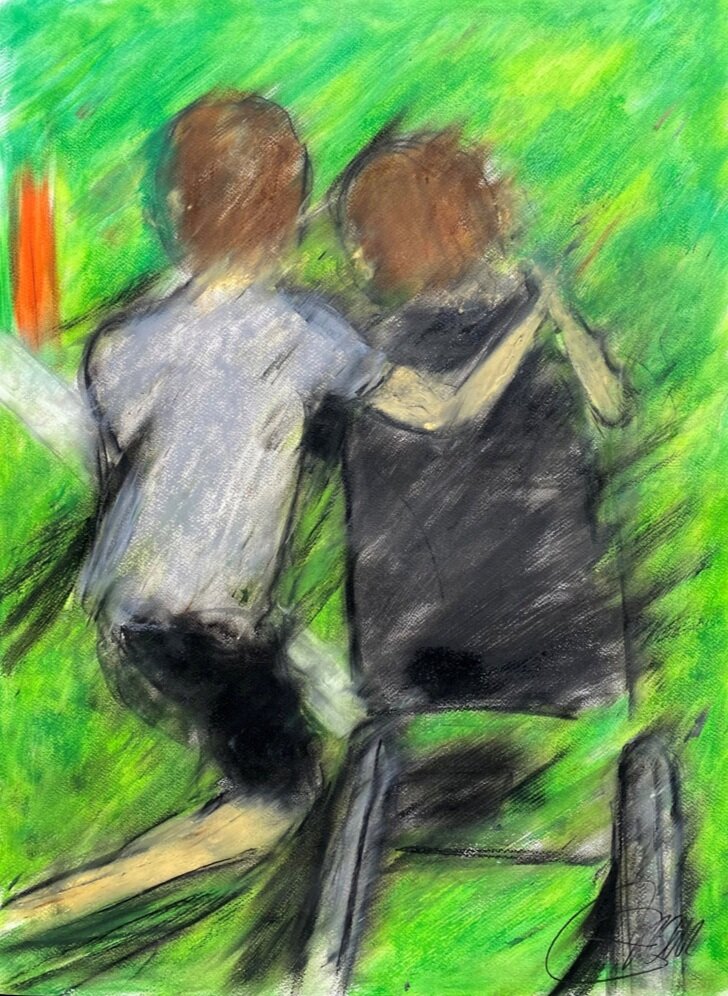My Boy by Jeffrey Sparr*
Tuesday nights at the University of Arkansas I play tennis with the greatest group of players imaginable: talented juniors, male and female, former Razorback players, a bunch of other 4.5 players from the local community. One night former Razorback coach Robert Cox invited Tim Siegel and Bobby Banks. Both had played on tour and for the University of Arkansas. Bobby Banks had coached Monica Seles. Tim Siegel had just retired as the head coach at Texas Tech. He was there to talk about what no one ever wants to talk about: his son Luke’s recent traumatic brain injury.
After we hit and played doubles for an hour, we headed upstairs to hear Tim speak. While Tim struggled to tell us his story—it was still so raw emotionally—I kept looking down at the ground, then up again into other people’s eyes. We were all either crying or stunned well beyond tears as Tim talked about the father and son stuff he did with Luke: playing catch, watching Saints games, reading his son to sleep.
In response to this tragedy, Tim Siegel founded Team Luke, an organization dedicated to helping families whose children have suffered traumatic brain injuries. Every year Team Luke has an annual fundraiser in Northwest Arkansas to help other families whose children have suffered traumatic brain injuries. I attended two recent annual fundraisers, one with Andre Agassi and one with Andy Roddick as the featured guests. I remember Coach Cox taking me aside and explaining what each person on every court had done in the tennis world, how so many in the tennis community were there to help Team Luke. This year’s event features Brad Gilbert and the Jensen Brothers on October 2 in Fort Smith. I hope to see many of you there.
While I was writing this, the sad news came that Luke had died. There’s not much to say except the loss is great, the work continues.
Our prayers and thoughts are with the Siegel family.
About Team Luke: Here’s the link for the upcoming event on Oct. 2: Play for Team Luke with Brad Gilbert and the Jensen Brothers.
You can learn more about Team Luke and Luke’s story on the Team Luke website.
*About the Artist:
On a whim, and with no background or training, Sparr decided to try his hand at painting. Like discovering a superpower, he found painting dramatically subdued the symptoms of his Obsessive Compulsive Disorder (OCD), providing a creative outlet and sense of control. Sparr has been crowned the "Forrest Gump" of painting, Forrest didn't stop running, Sparr hasn't stopped painting. This discovery changed the course of Jeff’s life.
Jeff paints with passion and purpose, using foam brushes, brash strokes and bold colors. He works quickly, pouring his energies onto the canvas. Brush in hand, he is in a zone, experiencing the quietude of his own mind. He is the man in the fedora: cool, strong, and self-assured. “I’m the peaceman,” he says, “it’s like a Superman thing.”
Jeff has harnessed his superpower and is on a mission to help millions of people find peace of mind through the arts. "I painted it made me feel better, I thought it would help others, that simple."
If you wish to make any comments on “Team Luke: In Memory of Luke Siegel ” feel free to leave them below or contact me. To see more art and short writings on tennis, you can check out or follow my new weekly blog for Tennis Players as Works of Art on my website.



